The air is filled with the smell of freshly cooked, delicious food; the long wooden table is beautifully set. The guests chat and enjoy Italian specialties. David Geisser’s cooking studio in Wermatswil will be filled by the golden, soft light of the evening sun within a few minutes.
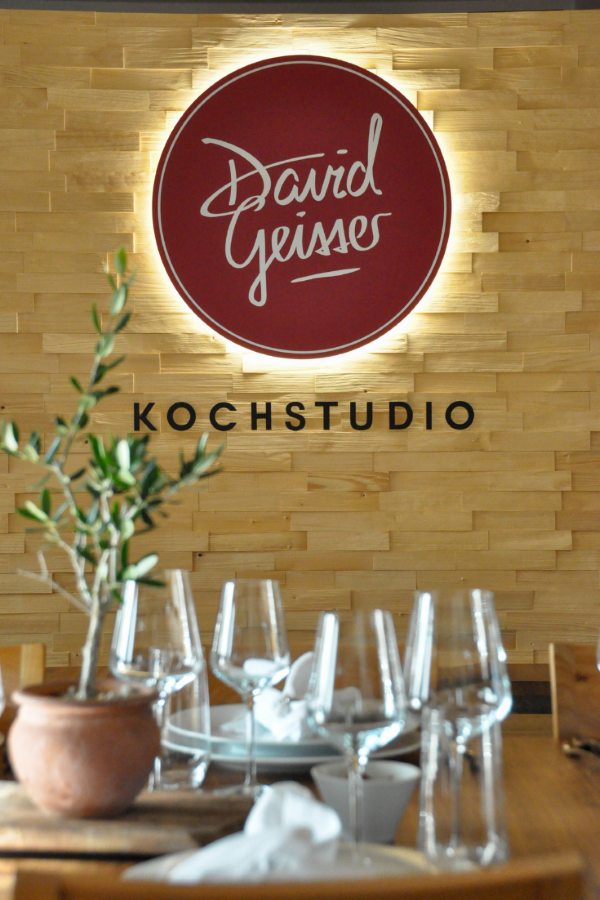
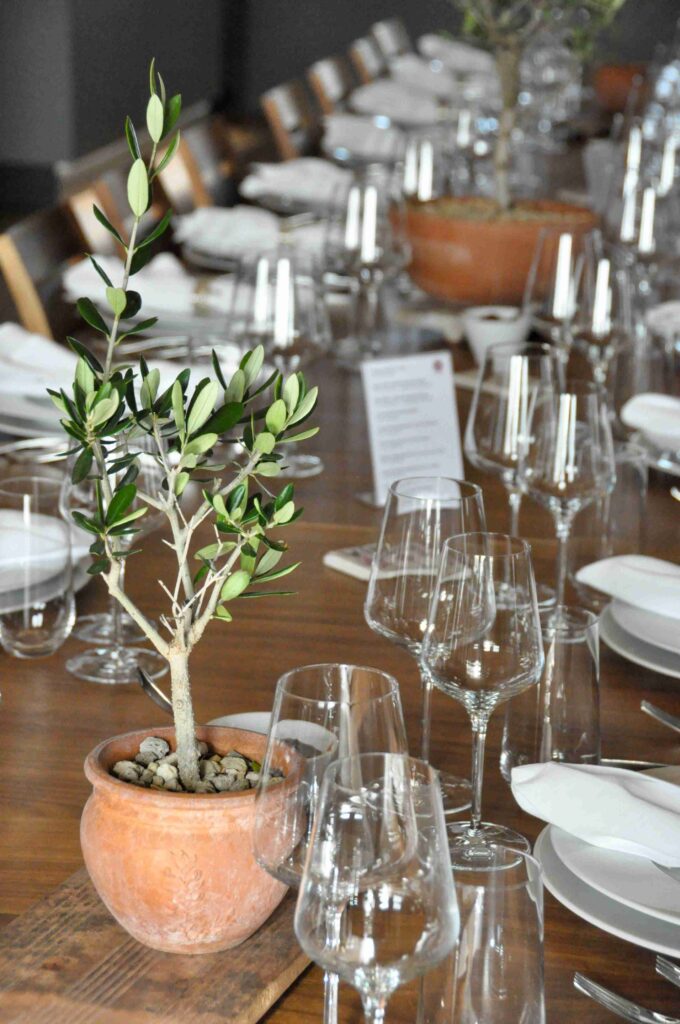
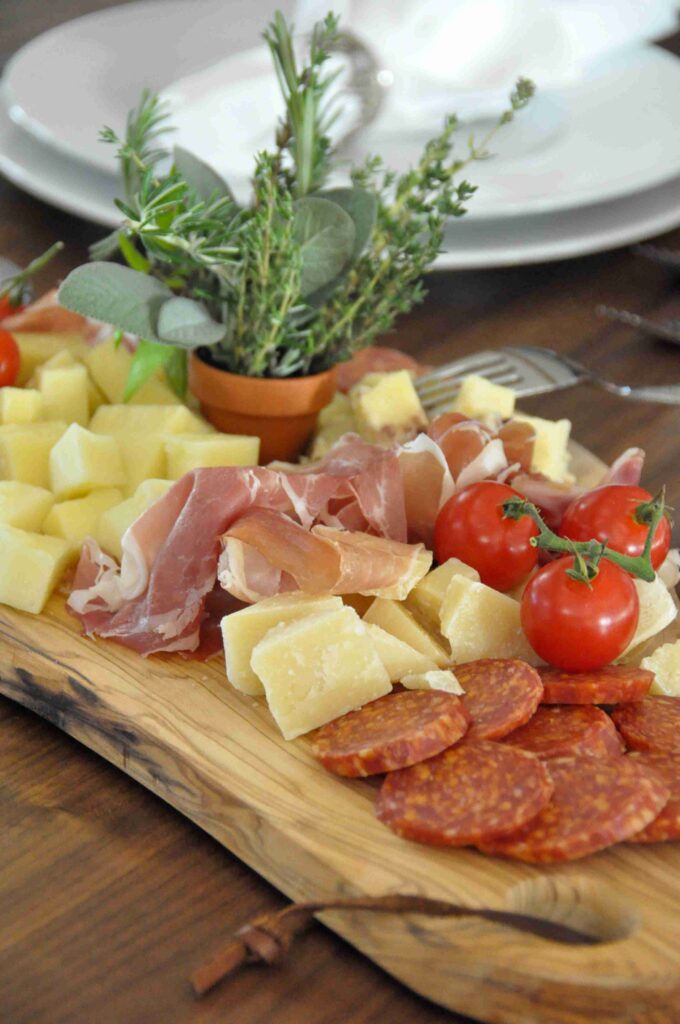
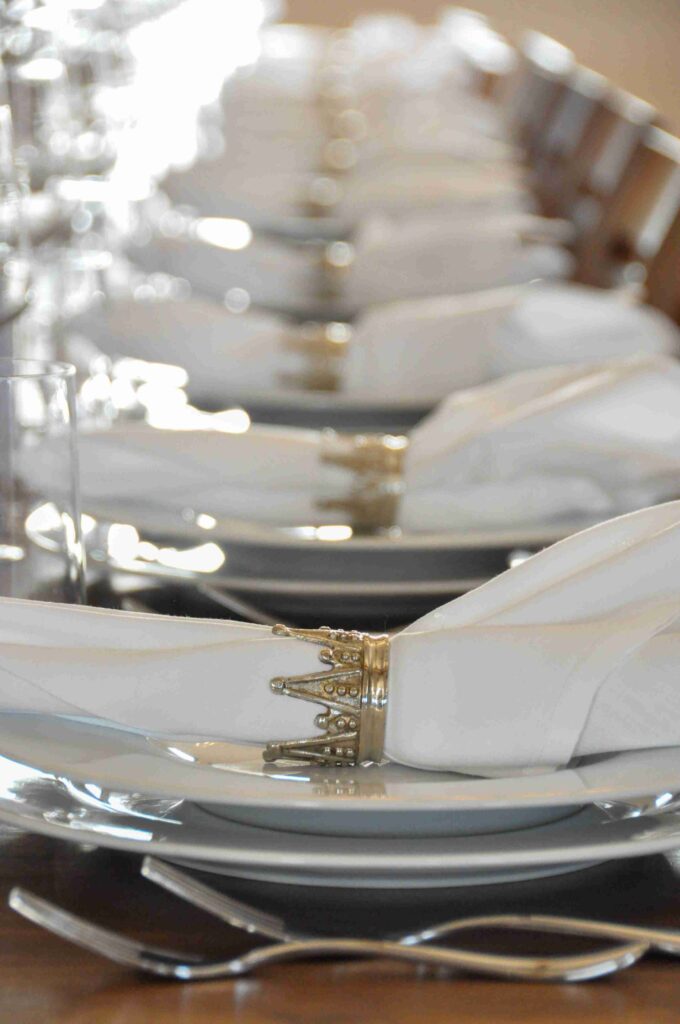
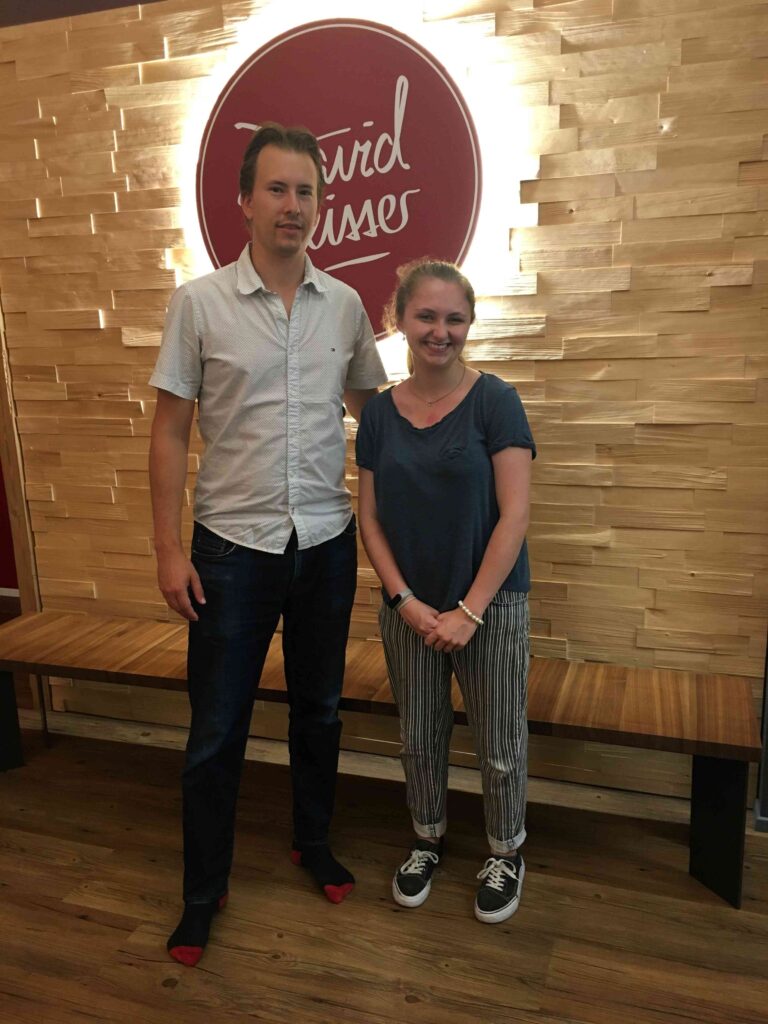
At the end of August 2020, I had the great pleasure of meeting Swiss celebrity chef David Geisser in person and helping out at one of his very successful tavolatas. This allowed me to get to know gastronomy from a whole new perspective. I’ll take you along to that tavolata with my pictures, and David has given me permission to share his recipe for Königschmarrn. I also interviewed David Geisser about his thesis, his success and his favourite meal. Enjoy! 🙂
David Geisser – the Swiss Celebrity Chef
David Geisser‘s early love of cooking was probably the start of his very successful career.
The first highlight was his graduation thesis: back then he became a star practically overnight with his first cookbook “Mit 80 Tellern um die Welt” (around the world with 80 plates). Later he also did an apprenticeship with star chef Antonio Colaianni at the Gault-Millau restaurant “Il Casale” in Wetzikon.
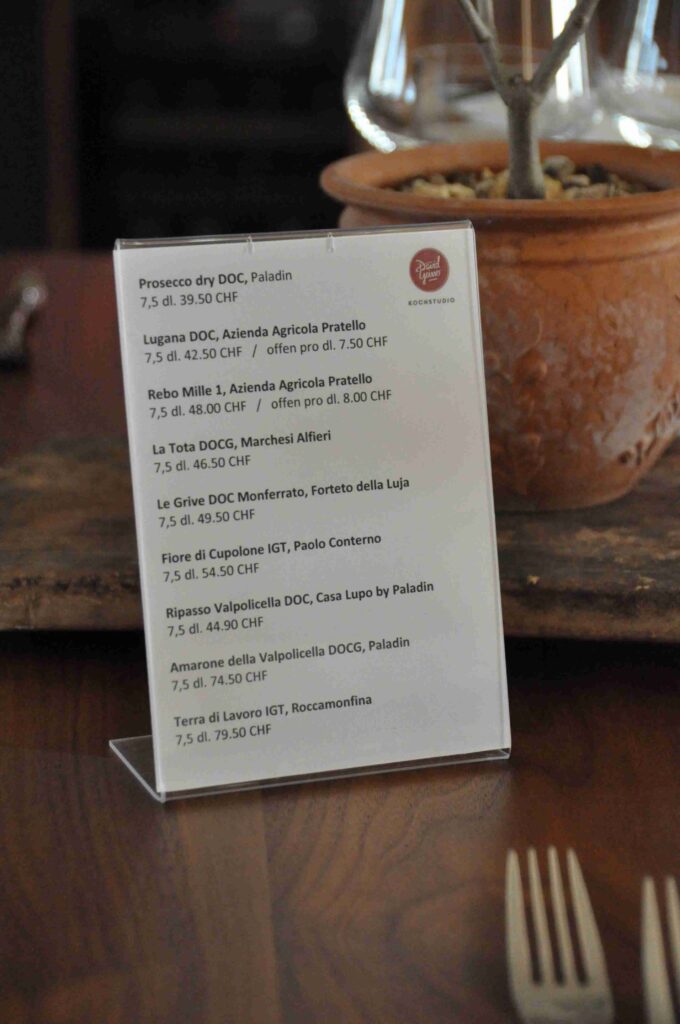
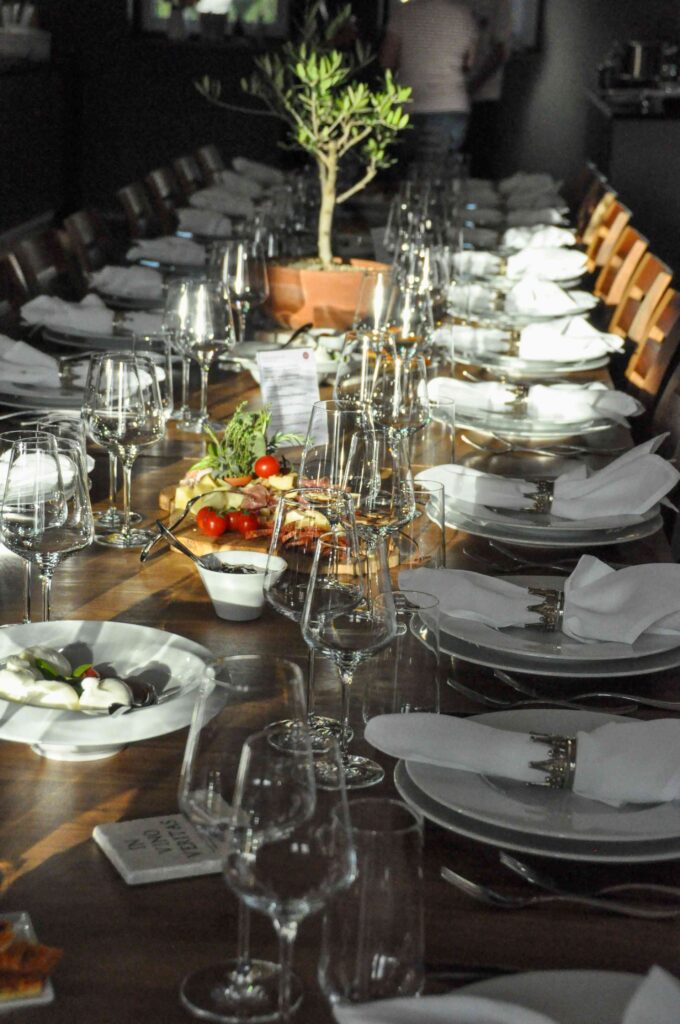
In the meantime, he has published several cookbooks and appears regularly on television. He also runs a state-of-the-art cooking studio with his team in Wermatswil, which becomes the meeting place for his Tavolata on the last Thursday of every month.
The Tavolata stands for Mediterranean specialties, lots of fun, serenity, and enjoyment. If you want to find out even more, you are welcome to visit his own website.
I had the phenomenal opportunity to be there and help out at his Tavolata. I was allowed to set the table, prepare the aperitif, serve it, pour the wine, serve some more, and cook a little bit. And at the end I was even allowed to finish the delicious dessert – a limoncello mousse – with homemade brittle. This was a special honour for me! 🙂
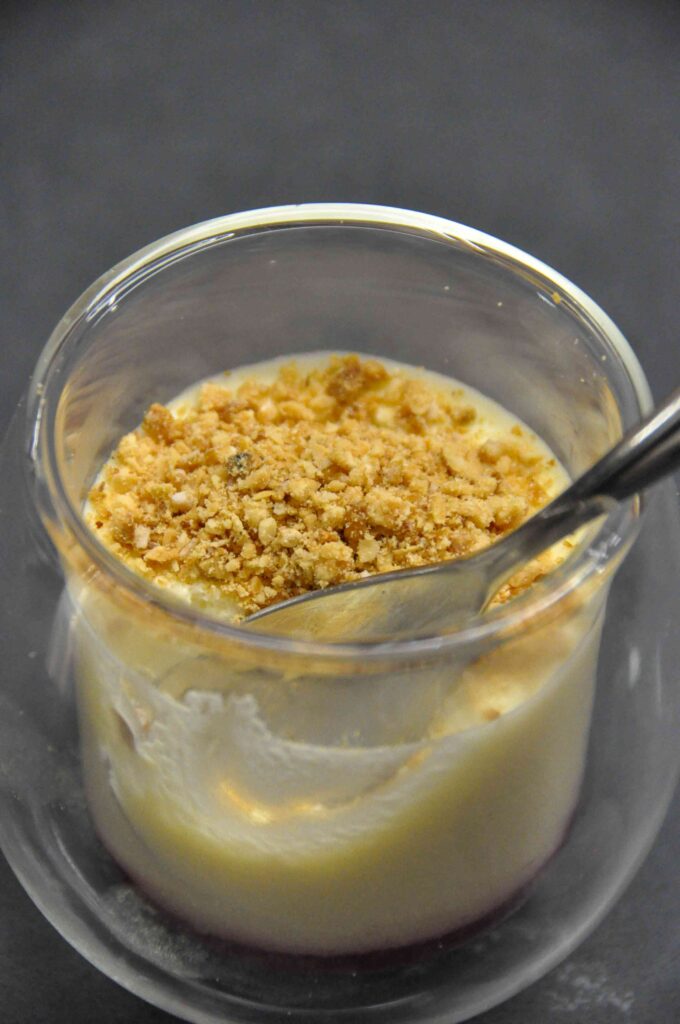
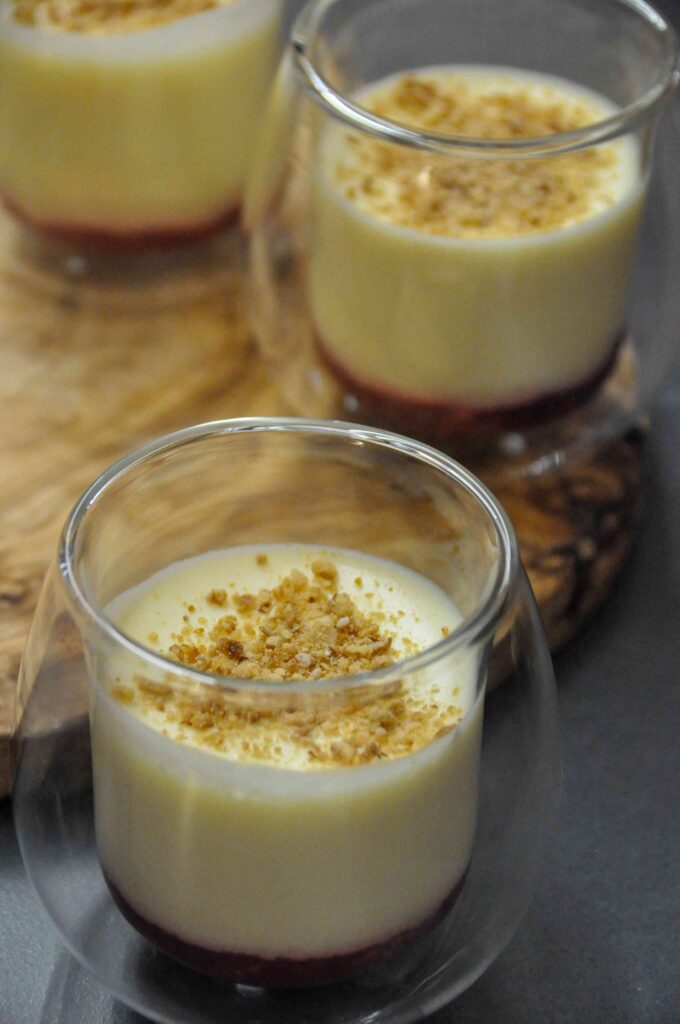
The Tavolata
At 6.30 pm, the first guests started to arrive. We had prepared a few appetizers and served a lovely French champagne. The mood was relaxed; the ambience beautiful and cosy. It was one of the last warm summer evenings and the evening sun shone through the large windows into the wooden hall.
Afterwards, the guests were allowed to sit down. There was a caprese salad with burrata, cheese and meat specialities from the south of Italy, and homemade olive bread from Nica Geisser.
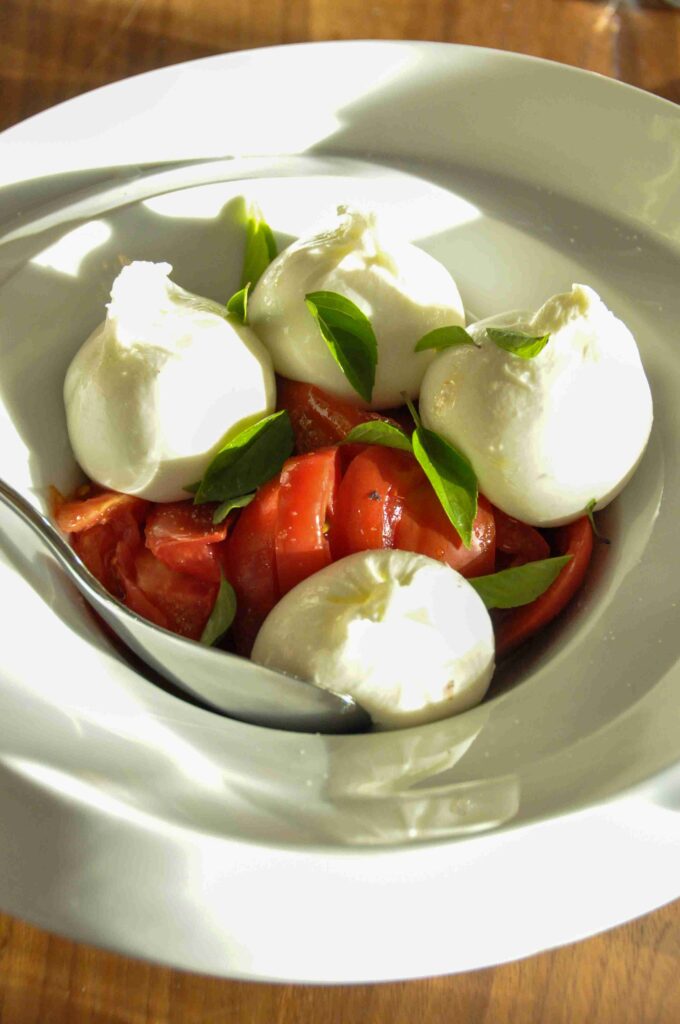
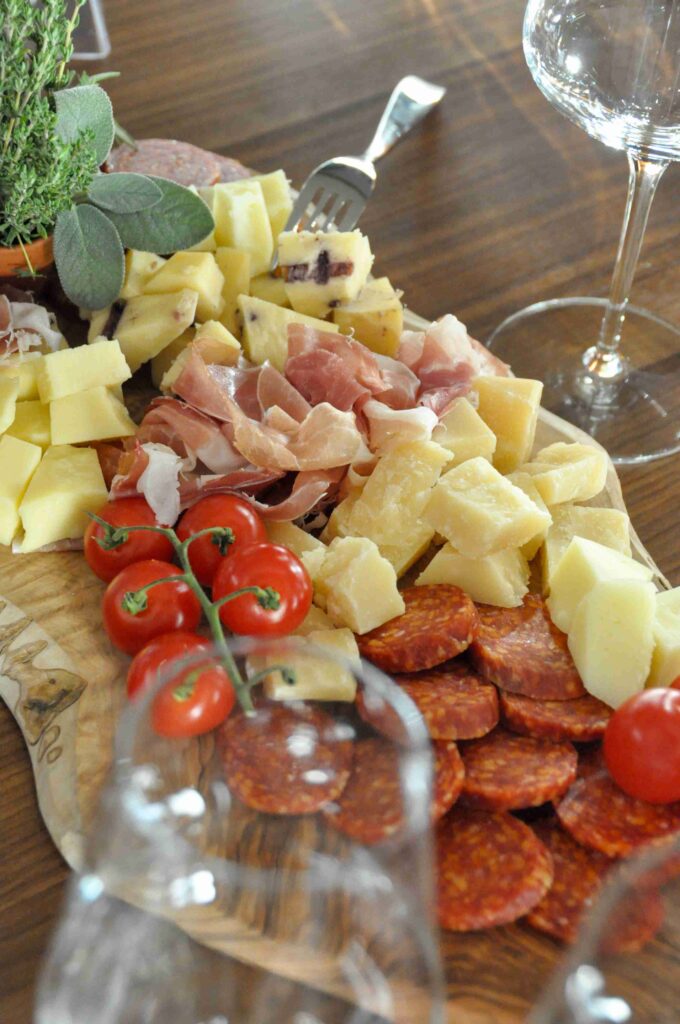
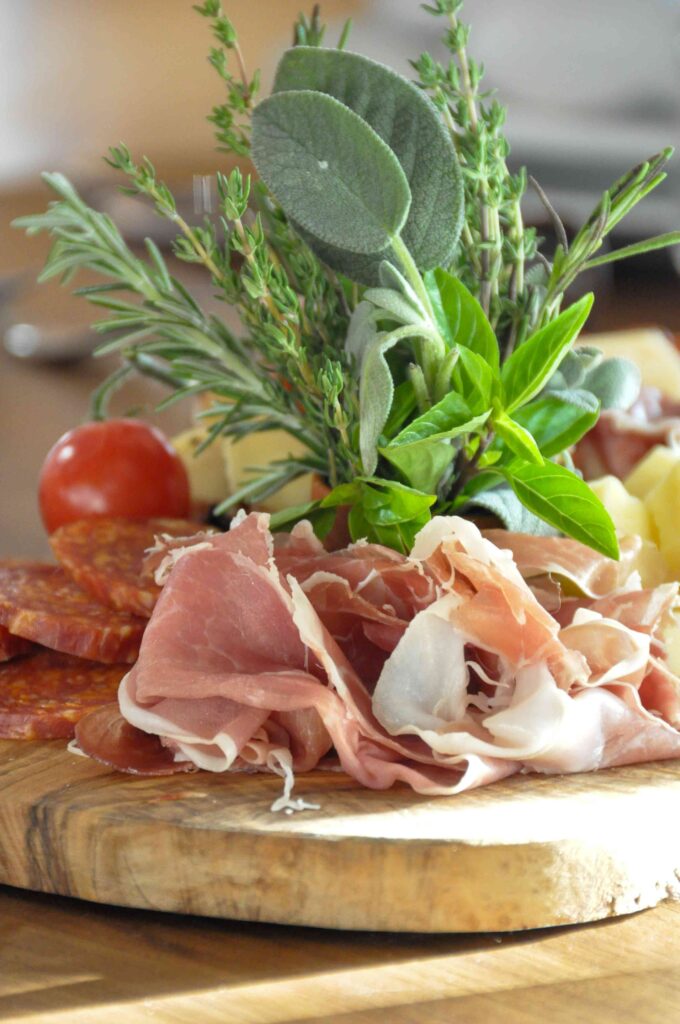
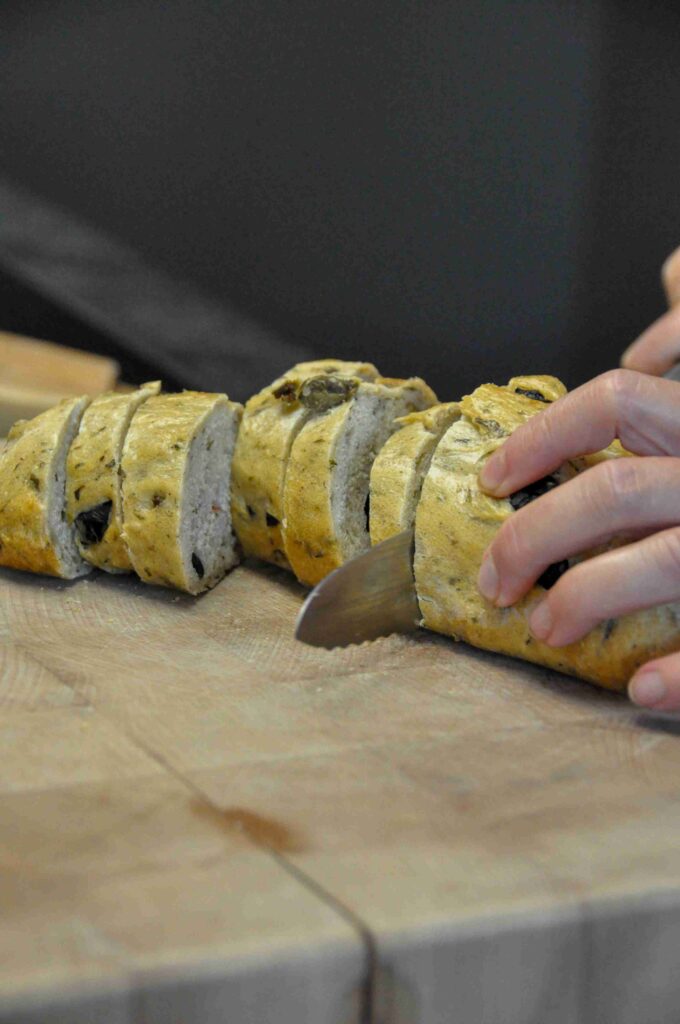
Afterwards, we continued with many more main courses – honestly, I forgot how many there were. Each main course tasted wonderful (I was allowed to taste-test myself and I honestly was on cloud nine); but of course you couldn’t eat too much because you had to leave room for the next course.
There was a delicious gratin with corn meal, pasta with a special mince meat sauce (not to be compared to Bolognese), a chickpea bar … and much much more. And finally, the legendary dessert: a light limoncello mousse with berry coulis and brittle. The mousse rounded off the evening perfectly – Joelle the dessert lover [me, myself and I] was really thrilled 😉
I truly recommend that everyone attend such a tavolata. The pretty, romantic ambience of the cooking studio, the team’s friendliness, and of course the delicious food … It was an exciting, relaxing evening.
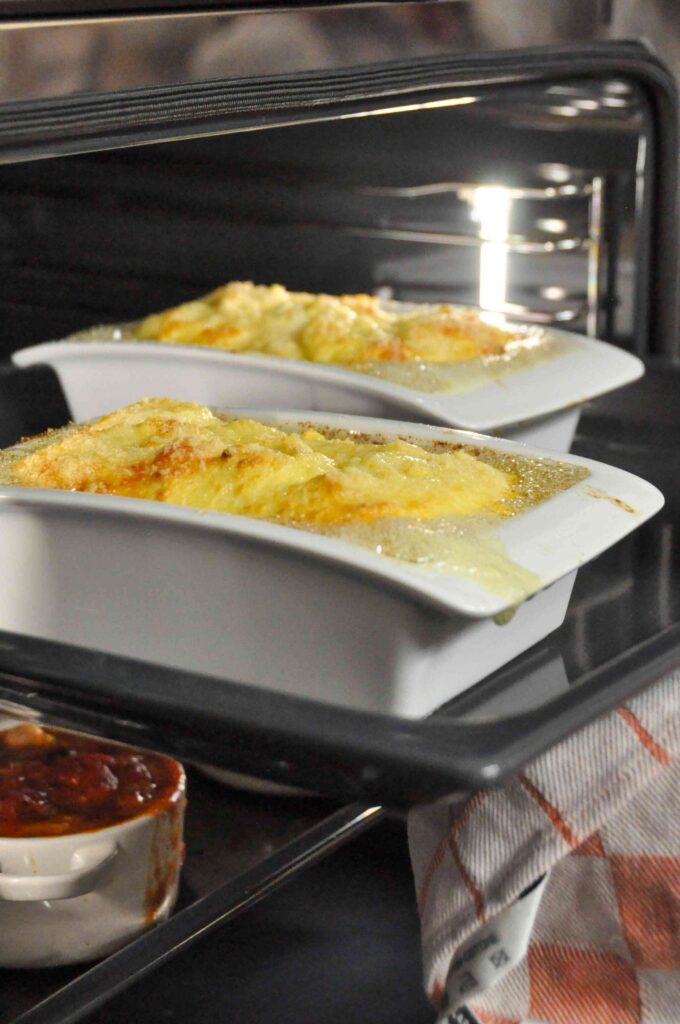
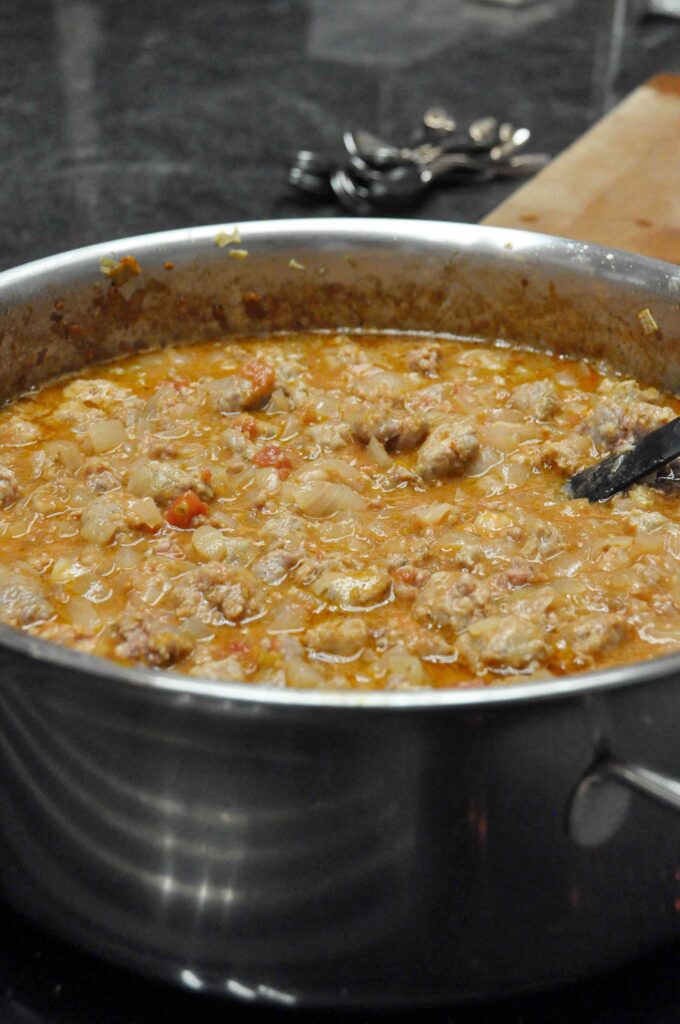
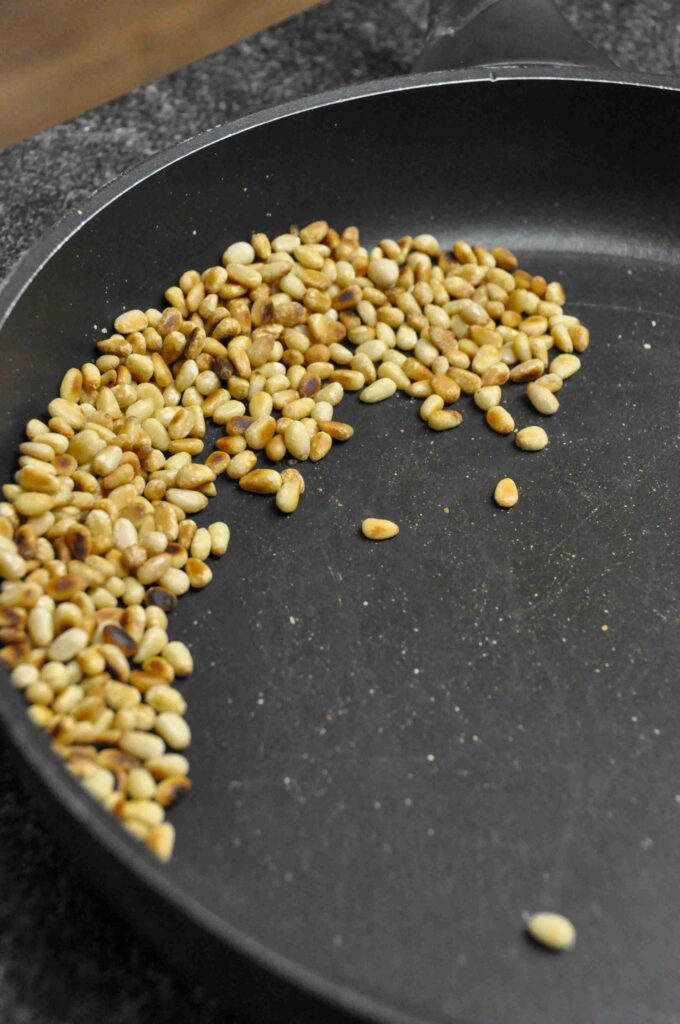
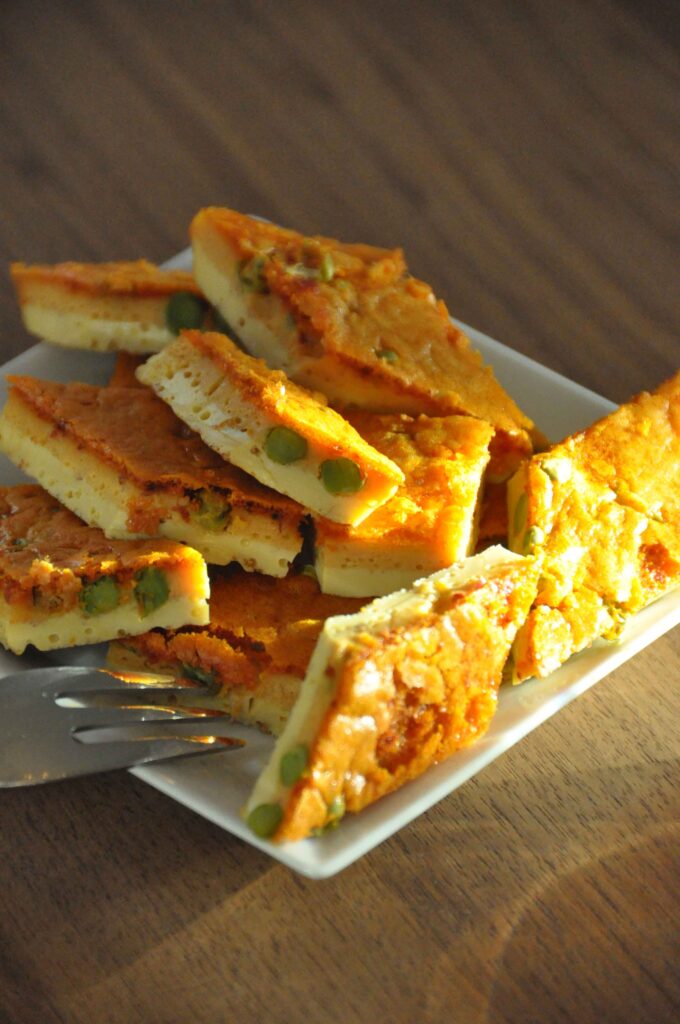
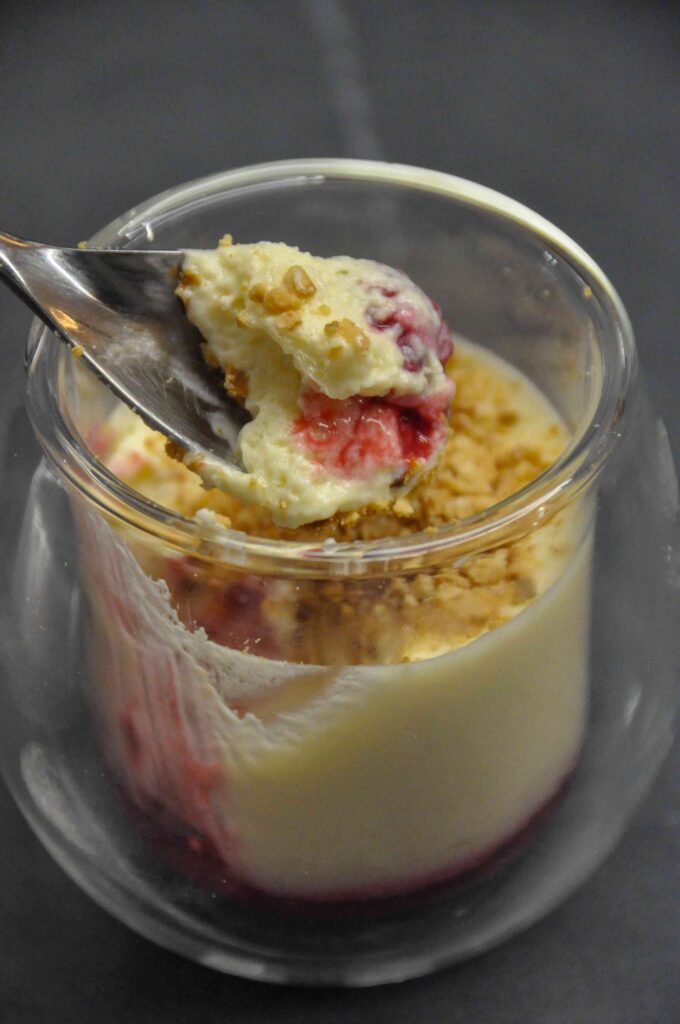
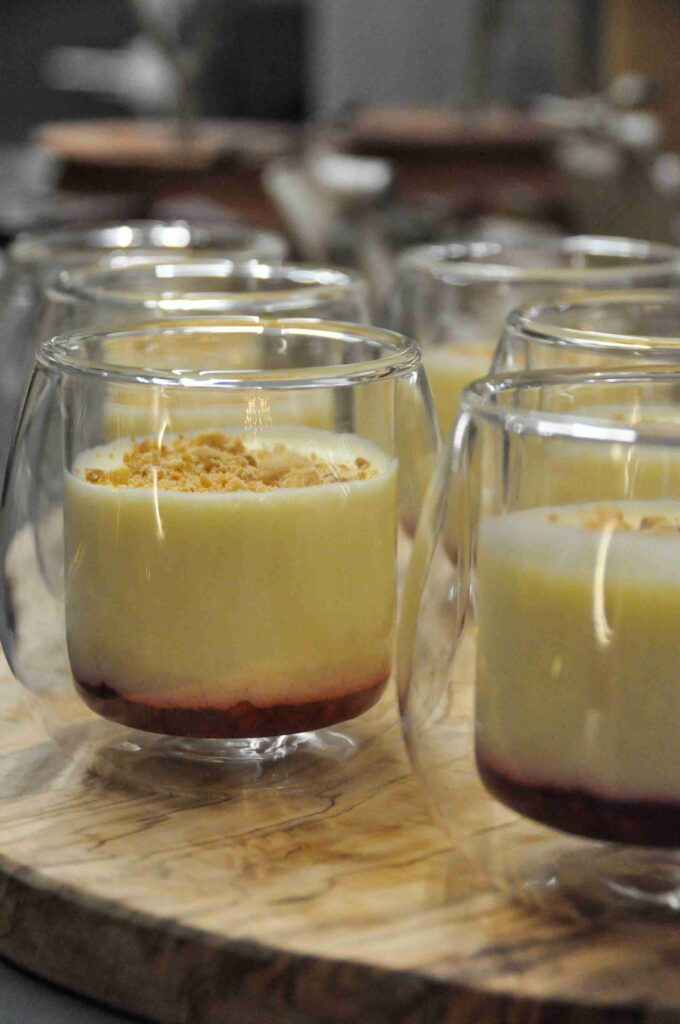
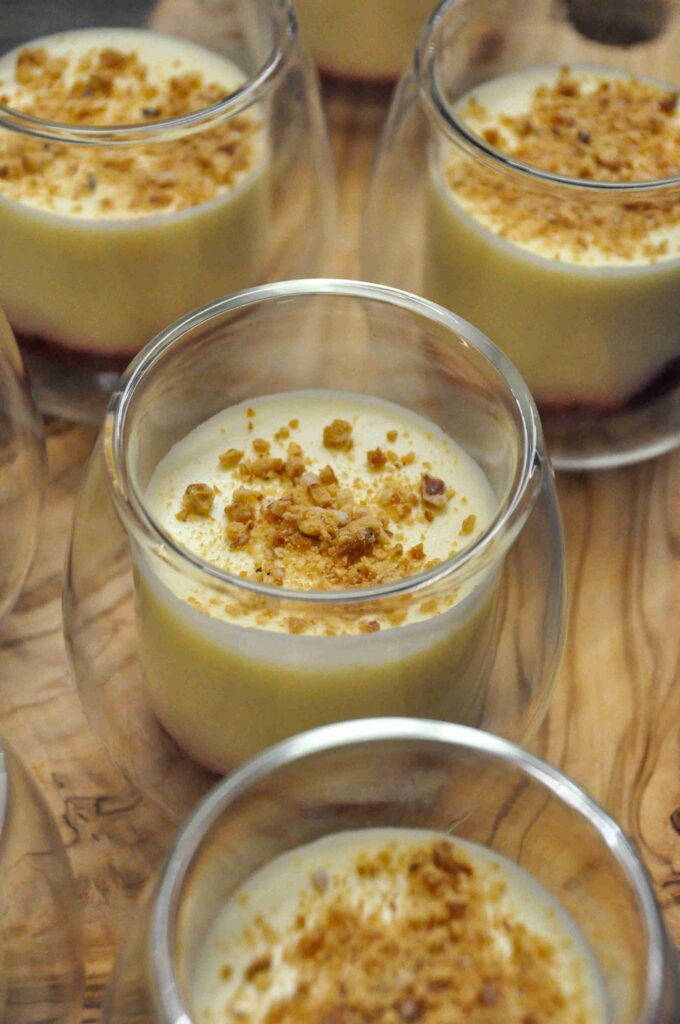
Königsschmarrn, the Interview and how everything began …
David Geisser has kindly given me permission to share his Königsschmarrn recipe with you. If you are in the mood for dessert or a sweet snack, please scroll down to the recipe. Königsschmarrn is actually like a combination of fluffy omelets/pancakes and “spätzli” … so make sure to give it a go 🙂
And if you can still be patient for a little while longer, you can read the interview I did with David. He told me about his final thesis, about various highlights of his career as a chef, and revealed some personal secrets. Let’s go!
1) You wrote your first cookbook as your final school thesis. That book was the beginning of something really big. What was the greatest and most exciting thing for you when you had such success with your book and your thesis?
I think one of the best things was when I was able to present the book. We just barely managed to get the book printed for the presentation. The books came from Germany and I was really happy when I could hold the book in my hands and present it for the first time. Furthermore, I was thrilled when journalists wrote about my work, and the very next day there were articles about me, and then television appeared as well. That was very exciting!
At first, of course, there was a lot of pressure on me, because I definitely took a certain risk as a student. I somehow had to pay for 500 books, and for me as an 18-year-old, 500 was a very large amount. I then gave an interview to the Züri Oberländer [local newspaper], and the next day I suddenly had 300, 400 emails in response to this article. Some people ordered 2-3 books at once, and that was a logistical problem for me because I didn’t have a company in the background. Other people congratulated me on the book and the article, and so I then had to answer all these 300-400 emails, and this was quite the challenge
2) What were/are the milestones that have shaped your career?
My first book, for sure. Then, of course, my apprenticeship with star chef Antonio Colaianni was a highlight. Meanwhile, the big milestones are the Swiss Guard cookbook I wrote; international breakthrough; working as a brand ambassador for companies in Switzerland; and of course the big cooking studio. Also, my own TV show; my own product line; and certainly all the books that I have written in the meantime. I also recently won the Influencer Award from Germany; and my two latest books, one of them international, are certainly milestones as well.
3) Did you have certain “insights” when you were writing your thesis? What was stressful or difficult?
In the beginning, of course, creating the concept and not knowing exactly in what direction the cookbook should go was a challenge. But when I could slowly see in which direction everything was going; when I had the recipes and also the pictures, then I was very excited, and I realized that this was going to be something great. Stressful, of course, were the exams along the way, the time invested in writing the work, certain recipes not working or some pictures not looking so great …
I had 80 recipes in the book, and some recipes I had to test 12 or 13 times until they were good. Other recipes, such as a soufflé, don’t look good and fresh after 5 minutes – a soufflé collapses after 2 minutes, so I sometimes had very little time to take the photo. At that time I was still living in my parents’ house, and then we set up a little studio for me on the 2nd floor. So there were various challenges; and if after a day of cooking the pictures didn’t look nice, then there were setbacks …
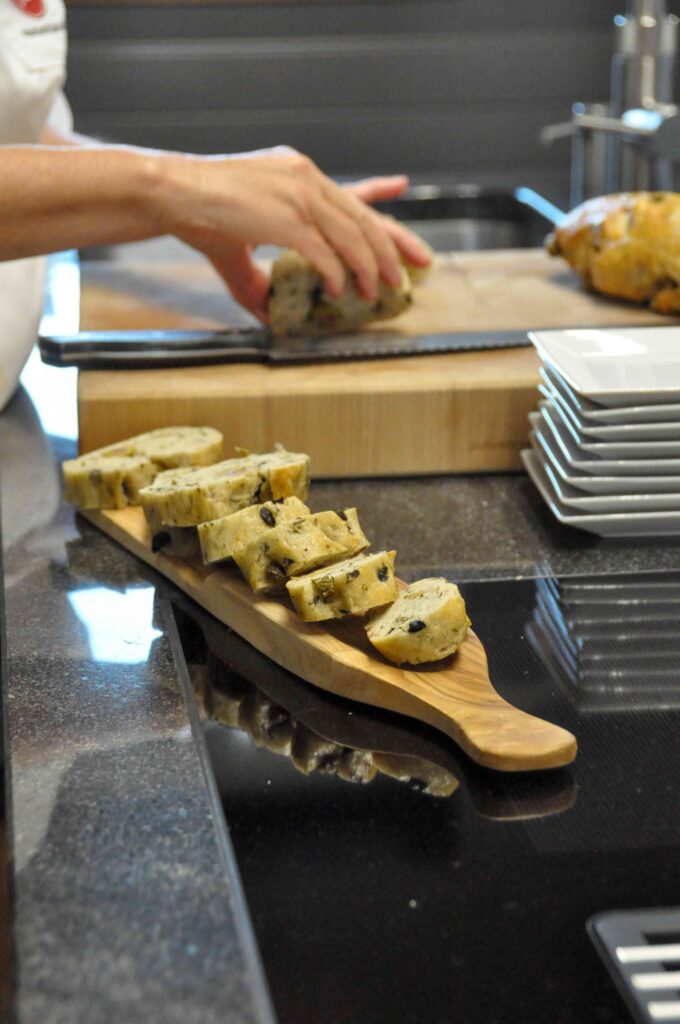
4) What is your favourite meal? Why?
I have loved crêpes with leeks ever since I was a child. But my favourite meal is a good piece of meat, or fresh bread with butter. If there’s a ham or cheese speciality to go with the bread, I’m very happy. And maybe tartar, a shrimp cocktail, and a glass of good wine – that’s something of the best for me. Simple and cold – but still very tasty.
5) What are your 5 favourite ingredients? Or which 5 ingredients do you think change/elevate a menu “dramatically”? (Without salt and pepper).
- Cream: With cream, you can refine any sauce. If you add a bit of cream to freshly cooked pasta, the pasta will become much more exciting than if you eat it directly out of the pan with boiling saltwater. Of course, butter also makes pasta a lot more interesting.
- Butter: As I said already, butter is also a very important ingredient.
- Pasta: Basically, apart from pasta, cream and butter, you don’t need much else for a delicious meal.
- Rosemary: Rosemary rounds flavours off nicely.
- Flour: Finally, you can of course do a lot with flour.
You can certainly make a lot with these 5 ingredients.
6) Is there an ingredient or a food that you don’t like?
The only thing I don’t like at all is blue cheese (I also don’t like Gorgonzola).
I haven’t tried everything yet and I’m basically open to a lot of things, but I probably couldn’t eat very fancy things, like in Asia, for example. For ethical reasons, I don’t eat frogs’ legs, for example.
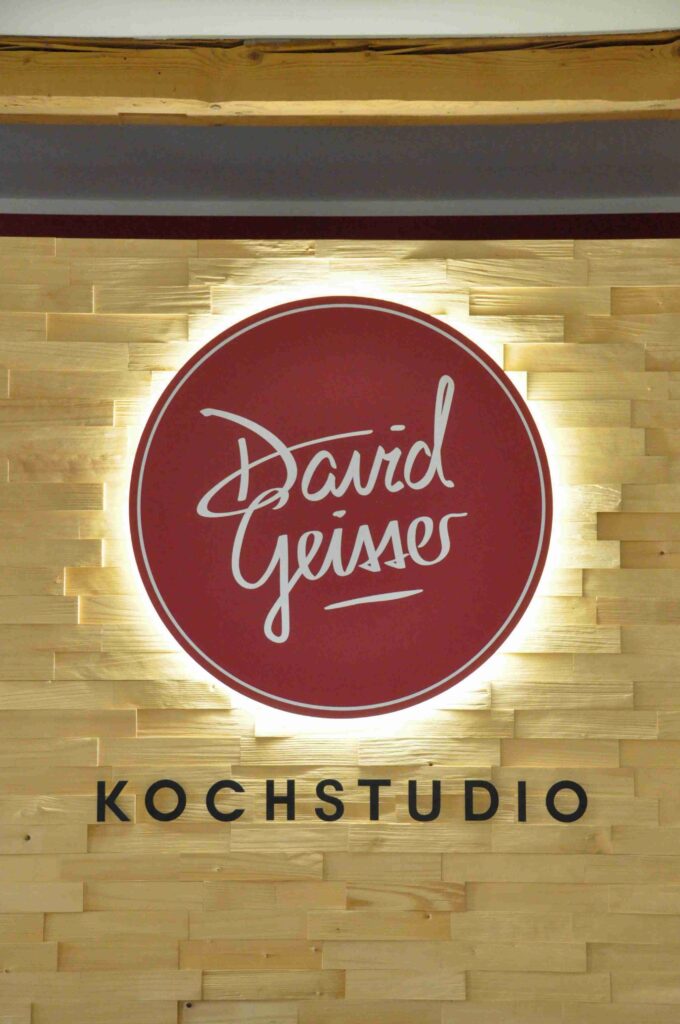
7) Where do you get your inspiration for your menus/meals?
Everywhere. When I’m visiting a certain place, or looking at something in a cookbook, or spotting something on TV, or on Instagram on other profiles … You should always be open.
I also get inspired by nature, or fresh, organic vegetables. Here in the cooking studio, we cook 95% organic, because that’s really a big concern for me. If I can buy organic food, I do it. It’s often the case that I see a food and then I get an idea of what I could cook with it.
8) What does a normal day look like for you? What do you do to relax?
I don’t have a normal routine. Today [Thursday] is the Tavolata; and tomorrow I’ll be working in my home-office. On Saturday I would have had a cooking class with Linda Fäh, but it had to be cancelled due to Corona. On Monday I have a meeting with BMW; on Tuesday a shoot for Eptinger-Water. The following week I will be filming my new cooking show. So it’s really always something different.
I’m very happy that my professional and private life can merge like this, because it makes my work very exciting. Sometimes, I get to try out new restaurant concepts, which is part of the professional aspect, but on the other hand, I just get to go there and enjoy.
When I’m abroad to visit a winery, for example, I have to take photos for the professional part. On the other hand, it is also fun – professional and private really merge, and that is certainly something wonderful about my work.
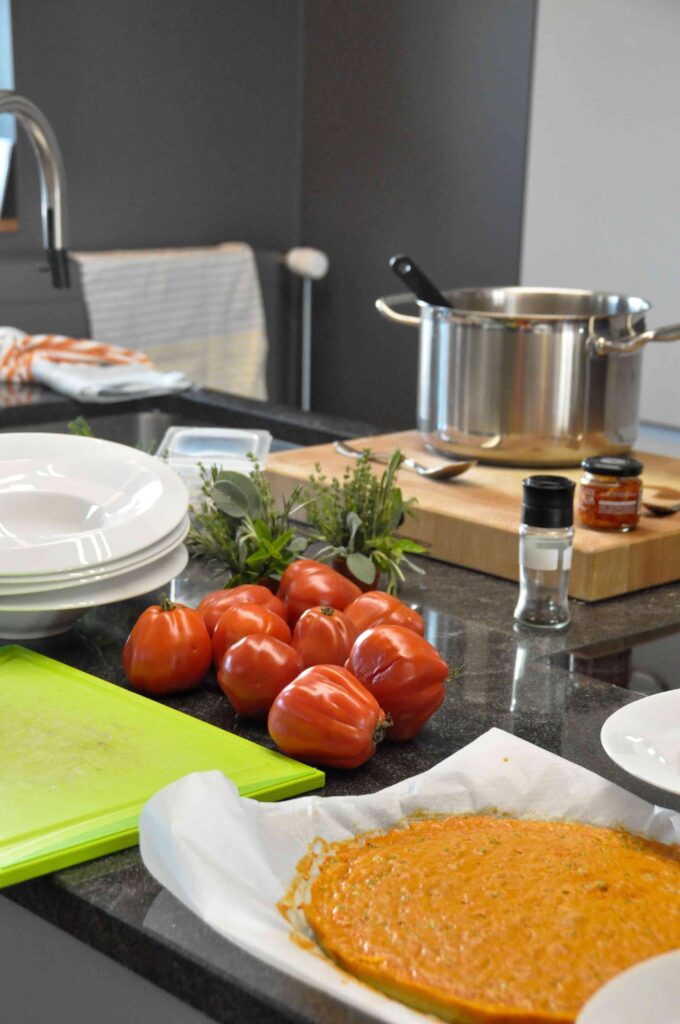
9) Do you end the day with something sweet or salty?
If there is something sweet, then I end the day with a sweet treat. But I also have to say that dessert is not the most important thing for me. If it’s part of the menu in a restaurant, then it’s great. But if I’m at home and I have the option to have some more of the main course for example, then I’d rather do without dessert. Dessert is not the most important thing for me, but it is definitely something delicious.
In the past, we often went out for roast beef à la discrétion with potato gratin, and now I think it would be a shame to have dessert there – I would rather eat more of the main course. But I know people have different opinions about dessert 🙂
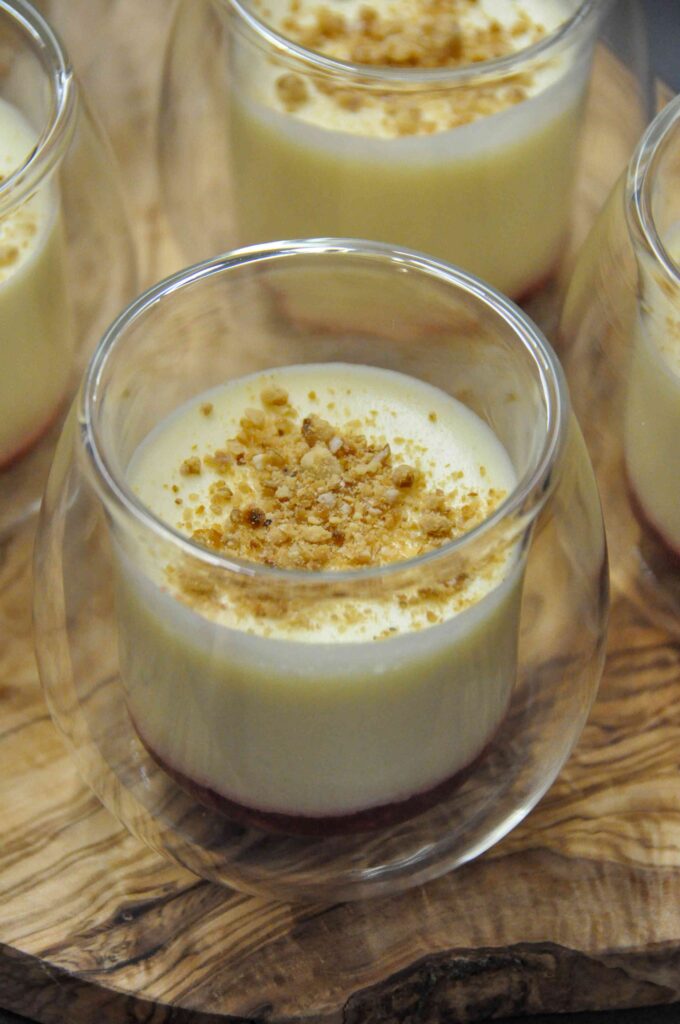
10) Which dessert makes your heart beat faster?
I really don’t have a favourite dessert. For example, I like a classic layered strawberry tart, or a roulade with berries. But I am very open to dessert creations. I like eating chocolate mousse, but of course I enjoy it even more if the mousse has been created into something exciting and new.
11) How do you put together a menu so that the dessert at the end suits the menu perfectly? For example, after a big meal, I wouldn’t necessarily serve a dark, juicy chocolate cake or something.
I have a great team that helps me a lot with planning the menus at the tavolatas.
There are desserts that are much more appropriate. A sorbet – maybe not extremely creative – always works, or a light, airy mousse. This would definitely fit much better than a huge slice of juicy cheesecake after a big menu. Then it definitely comes down to variation and it should fit the theme if the whole menu is themed.
For an Italian tavolata, I would definitely not serve a piece of Swedish cake. The cake would then also be way too filling and rich.
You really can’t go wrong with an airy fruit mousse. At today’s Tavolata, we are serving a lime mousse with sponge cake in a glass – something light and airy that is guaranteed to excite the guests.
You can flavour a mousse individually to suit any theme. If you’re doing an Asian evening and you make a lime and lemongrass mousse, it definitely fits the bill.
12) Finally, do you have any tips when arranging desserts or meals that you would like to share? What can you do to make the dessert visually beautiful, not just tasty?
- Less is more. It’s better to serve a dish a little smaller instead of just one huge piece.
- In the past, the edge of the plate was often decorated with icing sugar or cocoa, or a lot of sauce was put on the plate. It would be nicer, for example, if you took a stencil or put a fork on the plate, sprinkled the cocoa powder over it and then removed the fork again. Then you have the beautiful imprint of the fork.
- Colour is so important! Berries, for example currants with the little branch, give a very nice splash of colour. You can also buy ready-made fruit purees or prepare a delicious fruit coulis and dab it on the plate. But, here too, less is more. For example, you can put a spoonful of mango puree on the plate and then spread it with a spoon in one quick stroke; this will give a pretty line. You can prepare something beautiful with only a few ingredients.
- For salty dishes, you can decorate the plate with parmesan chips. You can also peel carrots, coat them in a little flour and salt and then deep-fry them – very tasty and a nice touch of colour on the plate.
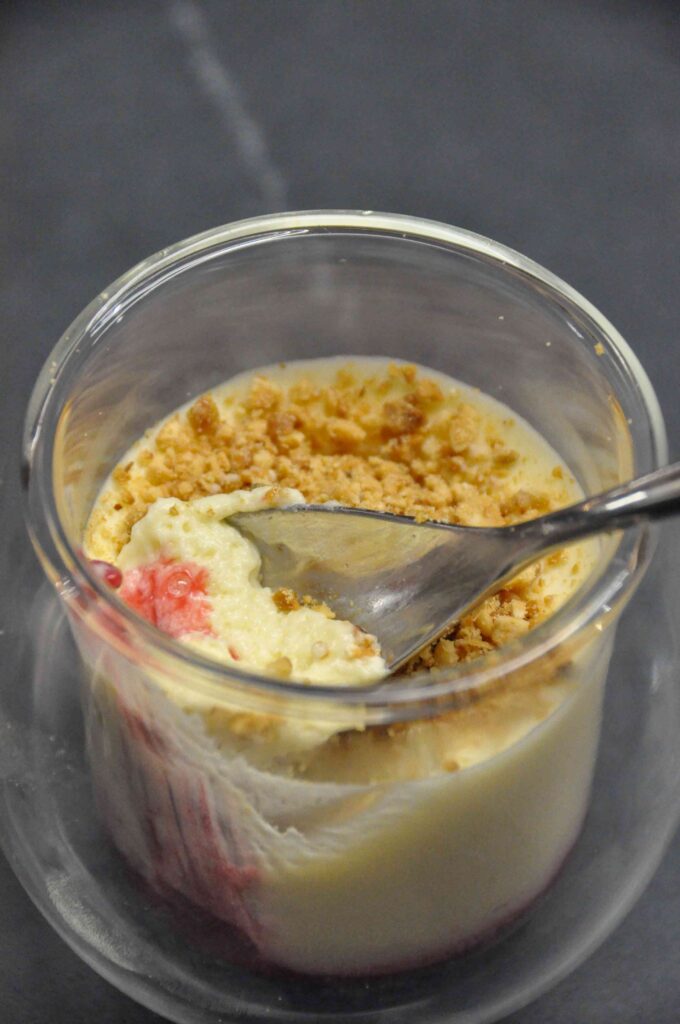
This is a long and detailed blog post – I know! 🙂 I hope you were inspired by David Geisser’s Tavolatas and that you know a bit more about him now. As I mentioned already, he has kindly given me permission to publish his recipe for Königsschmarrn – a mixture of sweet Spätzle, omelets and French Toast. You’ll love it!
If you make the recipe or have any questions, please comment down below and rate the recipe. Don’t forget to follow me and David Geisser on Instagram! 🙂
Joelle xx
You might also like …
- Almond Thumbprint Cookies: Buttery, sweet and delicious – and made in a jiffy!
- Homemade Salted Caramel Sauce: Making caramel really isn’t that hard. I have a detailed blog post ready for you to make sure you succeed!
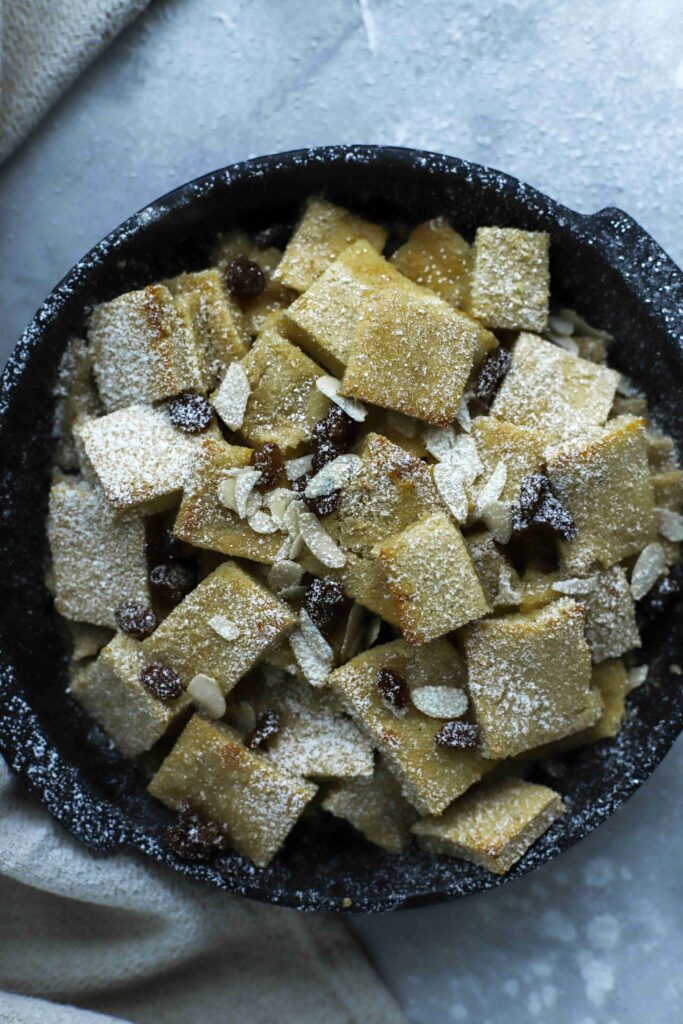
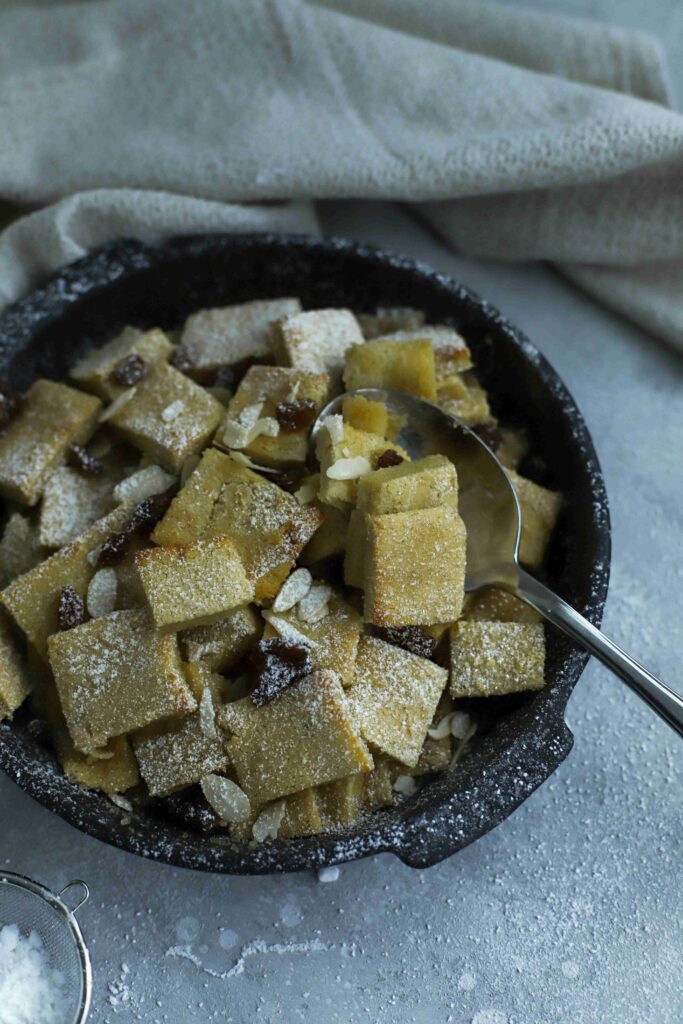
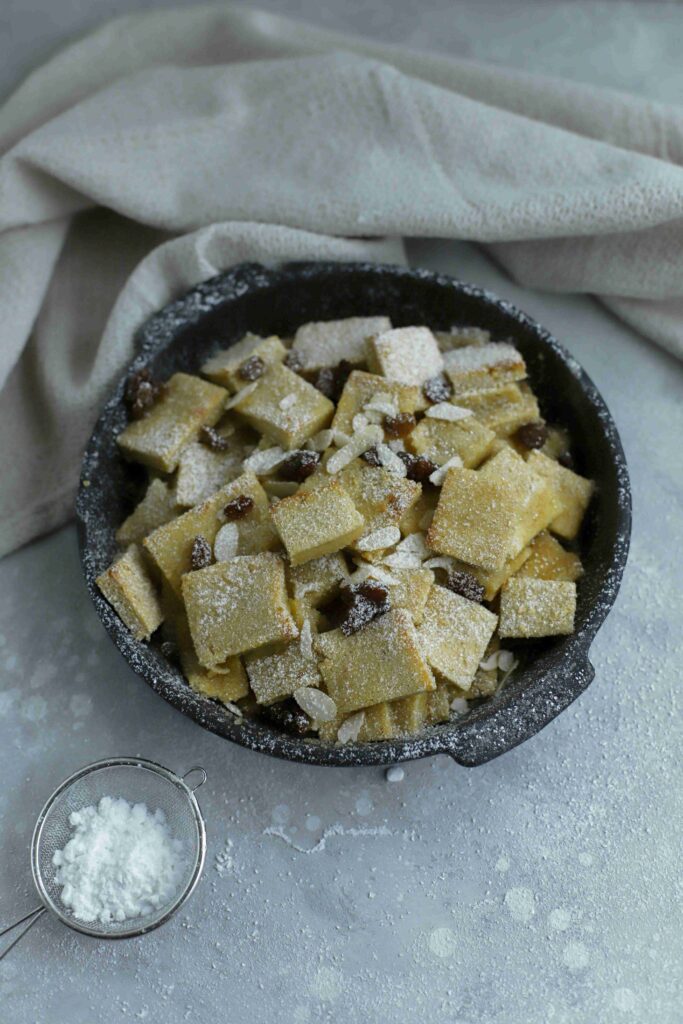
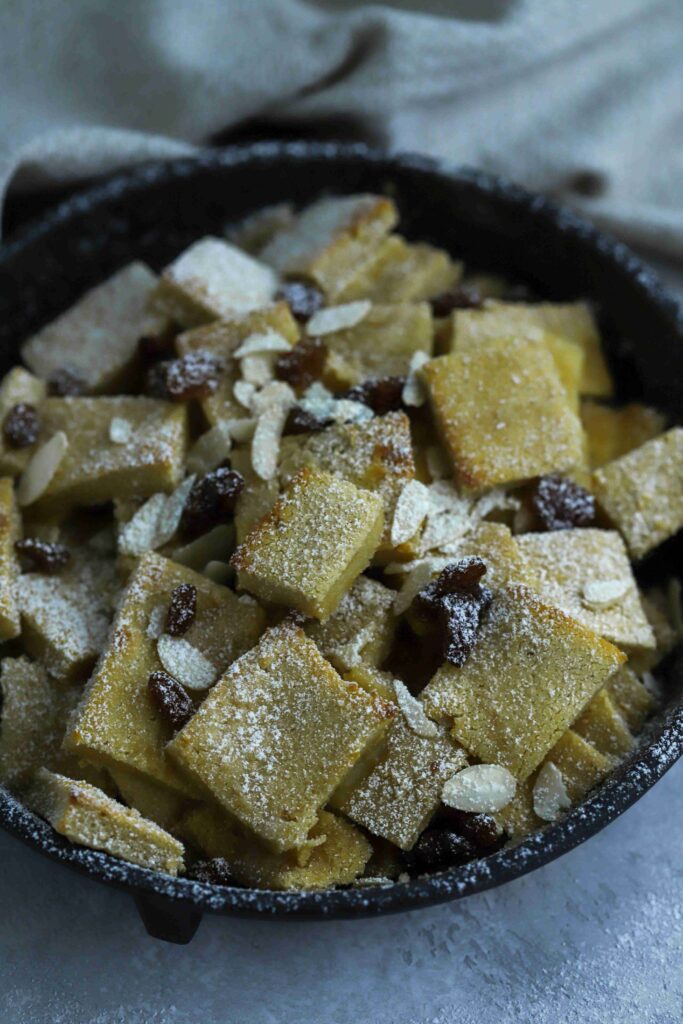
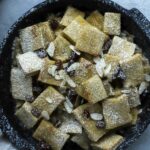
Königsschmarrn by David Geisser
- Prep Time: 20 minutes
- Rest Time: 60 minutes
- Cook Time: 40 minutes
- Total Time: 2 hours
- Yield: 6 portions 1x
- Category: Pancakes
- Method: Baking
- Cuisine: German
Description
Königsschmarrn, or known as Kaiserschmarrn, is a delicious German Pancake that is baked in the oven. It’s sweet, fluffy, and extremely delicious!
Ingredients
- 180 g butter
- 140 g all-purpose flour
- 600 ml milk
- 9 egg yolks
- 9 egg whites
- 230 g brown sugar
- ½ tsp gingerbread spice
Instructions
- Melt 140 g of butter in a saucepan, add the sifted flour in a quick motion, and stir. Cook both briefly until the flour is toasted light brown.
- Add the milk and gingerbread spice and stir until you have a smooth, thick mixture.
- Allow the mixture to cool below 70°C, then gradually add the egg yolks.
- Beat the egg whites stiff and add 190g sugar after half the beating time.
- Slowly fold the beaten egg whites into the flour mixture.
- Spread everything on a baking tray lined with baking paper and spread evenly.
- Bake the mixture for approx. 20 minutes on the middle rack at 180°C, non-fan assisted. As soon as the surface is slightly brown, remove the Schmarrn from the oven and leave to cool in the tray.
- Turn the cold Schmarrn upside down and cut into even pieces.
- Melt 40g butter in a large ovenproof frying pan, add the remaining sugar and toss the prepared pieces in it.
- Place the pan on the middle rack of the preheated oven at 180°C for 10 minutes. The Schmarrn will rise again during baking.
- If you like, you can decorate the Königschmarrn with toasted almond flakes, raisins, and icing sugar. As we’d say in Switzerland: “En guete!”
Notes
- The full recipe with nine eggs is enough for about 6 people when eating the Kaiserschmarrn as a main dish. If making the Königsschmarrn as a dessert, I recommend scaling the recipe down to 5 eggs, which makes enough dessert for 4-6 people.
- I love to serve the Königsschmarrn with “Öpfelmuess”, which translates to apple sauce. I enjoy it with a sweet-sour berry jam too, but a sprinkling of powdered sugar goes a long way, too!
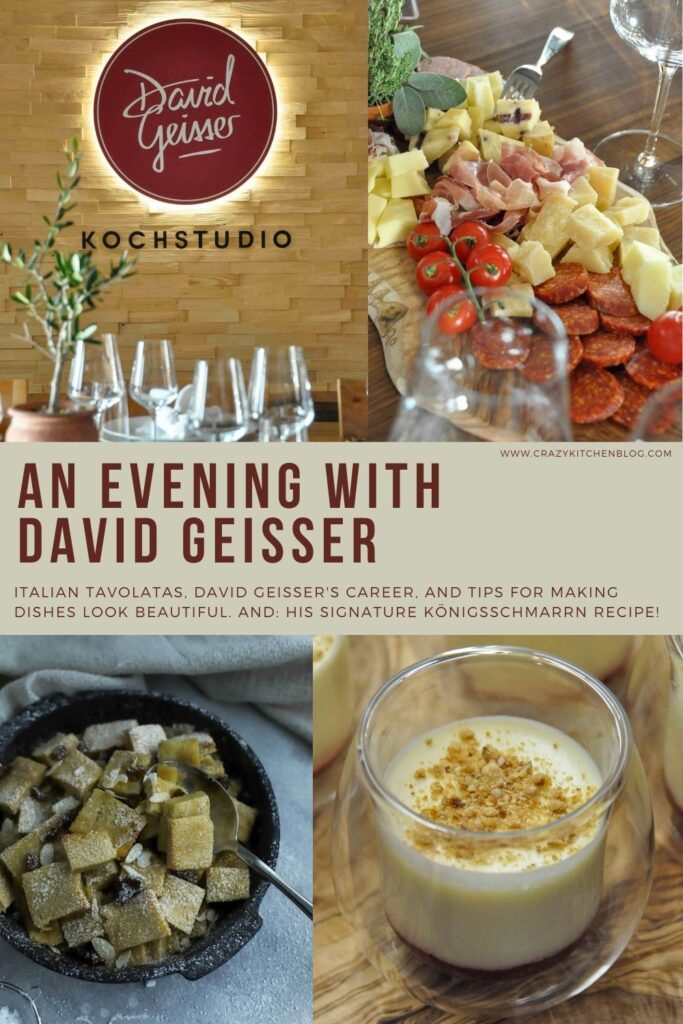
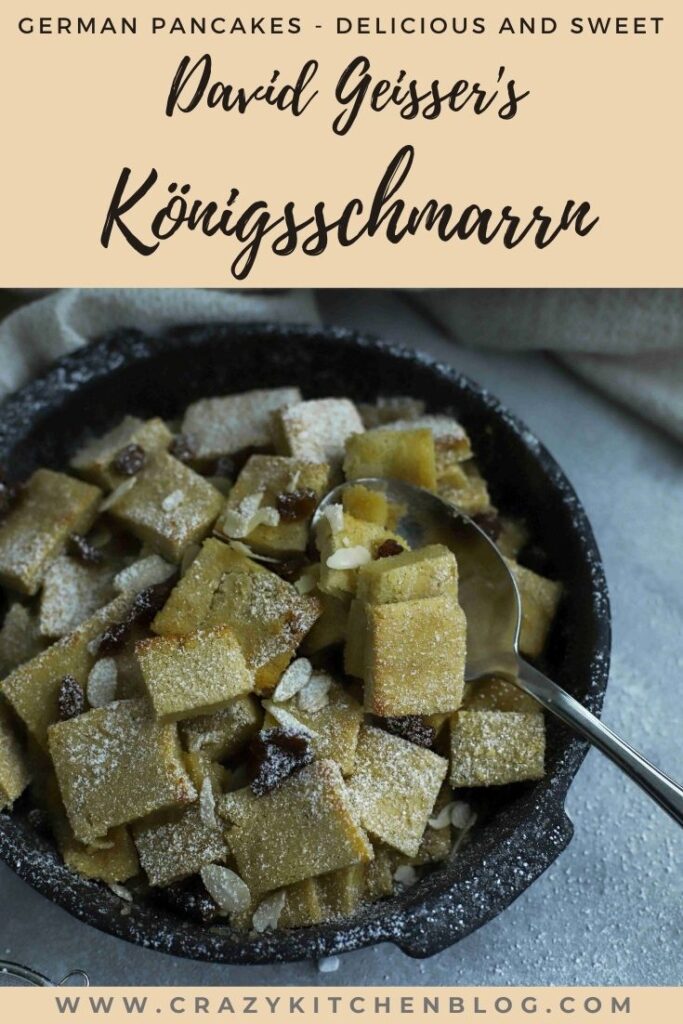
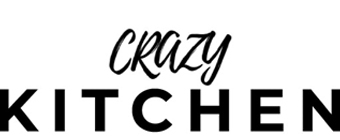
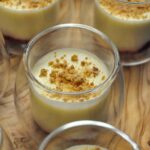

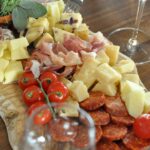
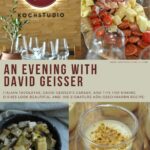
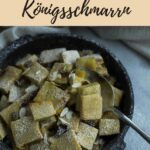
Leave a Reply